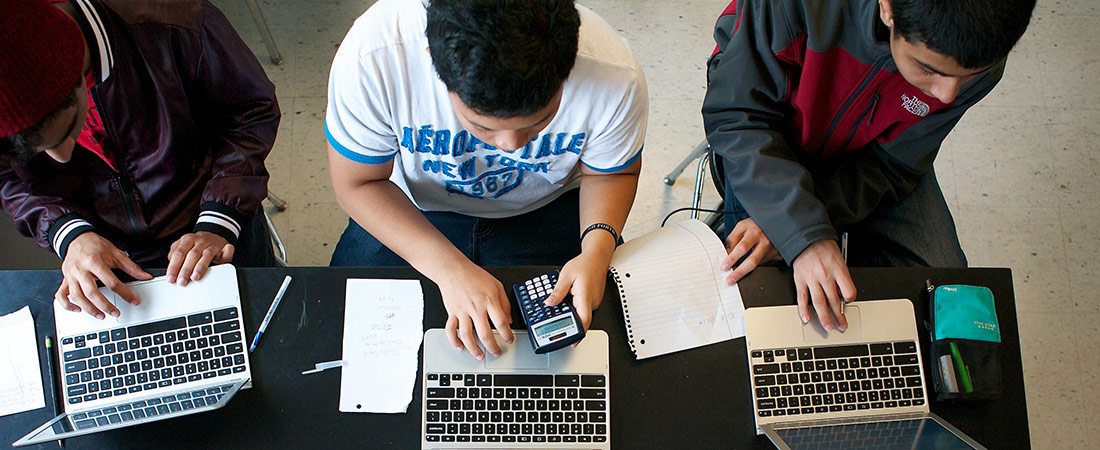A New Approach to Data

Ruth Krumhansl was working as an environmental consultant 15 years ago when she got a call from a geologist in the Midwest. The geologist was trying to assess the level of subsurface contamination at a gas refinery with a long history of environmental concerns, and he was stuck. The scope of the project was daunting, and the amount of data he had collected was overwhelming.
It wasn’t long before Krumhansl figured out why he was having such a difficult time making progress.
“They had collected all sorts of data on the subsurface conditions,” recalls Krumhansl, now a senior research scientist at EDC. “I asked him what they had learned from all of this data, and he said that it hadn’t been analyzed yet. They didn't know where to start.”
For Krumhansl, this story illustrates the fact that merely collecting data does not solve any problems; it has to be analyzed and examined for truths to be revealed. But she also wonders whether young scientists are entering biology, chemistry, and physics with the skills needed to digest increasingly complex scientific data sets.
In fact, this has become one of her biggest concerns about the state of K–12 science education in the United States. “The way science is done is being transformed right now,” she says. “Science is data intensive, but science education isn’t.”
The type of data that is changing science has a name. It’s called “big data,” and it refers to the voluminous amounts of information—everything from online shopping habits to real-time atmospheric conditions around the globe—that are continuously collected and stored in increasingly larger databases.
And big data is appropriately named. A recent National Science Foundation (NSF) report predicted that the quantity of digital data available in 2015 would be more than double the amount available in 2012.
Krumhansl, herself a former ninth-grade science teacher, is at the forefront of EDC’s new push to develop tools that help students find patterns within big data. She believes that knowledge about how to work with big data will be an essential skill in the 21st century economy and that schools must fundamentally change the ways they teach data analysis.
The first step in getting students hands-on with data is to develop computer interfaces that enable them to sift through the tons of information contained in publicly accessible scientific databases. Unfortunately, few of these tools already exist—and little thought has gone into figuring out how to design them.
Working with a team of colleagues from EDC and the Scripps Institution of Oceanography, Krumhansl recently conducted extensive research on computer interface design and published a framework for designing Web-based data access and data analysis tools that could serve as a bridge between inquisitive students and unwieldy data. She describes the report, titled Visualizing Oceans of Data: Educational Interface Design, as “the starting place for the tremendous amount of work that has to be done.” It has already received attention from organizations such as NASA and NOAA.
And while Krumhansl’s Visualizing Oceans of Data report is intended to be of use to educational interface designers and software developers, her Ocean Tracks project at EDC could be of immediate relevance to students.
Funded by NSF, Ocean Tracks: Investigating Marine Migrations in a Changing Ocean sets out to develop a user interface for analyzing data from radio-tagged marine animals, satellites, and drifting buoys. Students will be able to use the interface to explore the migration habits of marine wildlife and identify how these patterns are affected by factors such as water temperature and ocean floor depth. It’s a new way to learn biology and earth science, and one that gives students access to the same information as scientists.
A changing discipline
At the root of these initiatives is the acknowledgment that the exponential growth of digital data will change how we live and how we learn. Unlike most privately collected marketing data, however, most scientific data is open and available for public consumption, since public funds were used to gather much of it. This has changed how scientists themselves try to solve some of the world’s most pressing problems.
Krumhansl talks about a recent conference where scientists from around the world convened to examine the relationship between kelp ecosystems and climate change.
“The emphasis was on sharing and combining data, and ultimately looking for global patterns,” she says. “This is so different from conferences 15 years ago when scientists would present their findings but often not have the means or inclination to share their data.”
Krumhansl offers workforce preparation as one significant reason behind the push to bring data sets into the classroom. But she also says that sifting through data gives budding scientists opportunities for exploration and wonder. Few students will ever get to accompany scientists on an expedition where they track tuna through the Pacific—but NOAA databases can help them get a taste of what the marine biologists are learning at sea.
And if students happen to discover a previously unknown behavior through the Ocean Tracks project? That’s ok says Krumhansl, although it’s not the reason why she believes the program is important.
“Often, there are no simple answers,” she says, “but involving students in looking at the evidence—the data—teaches them that answers based on evidence are more correct.”